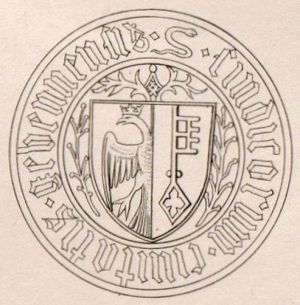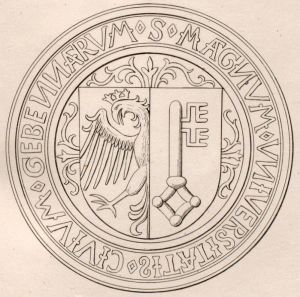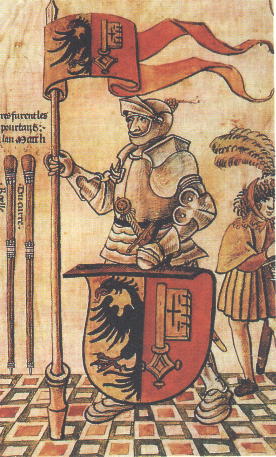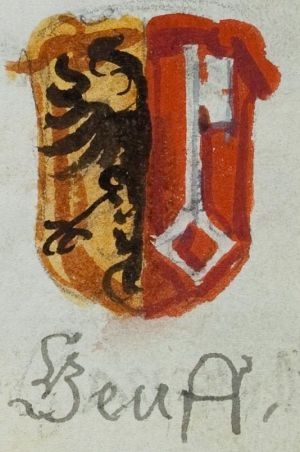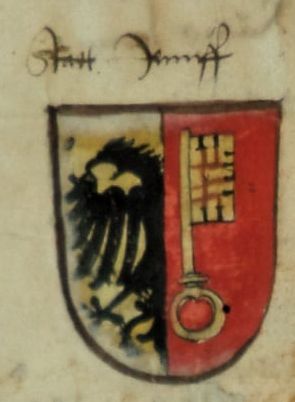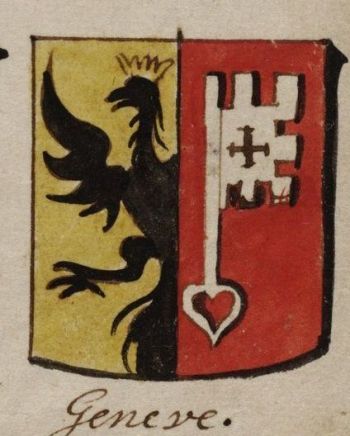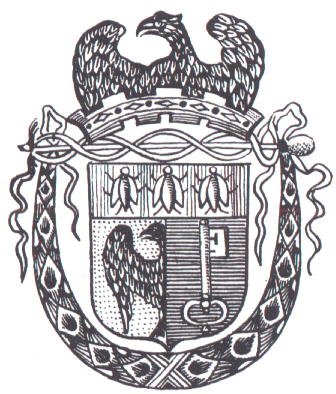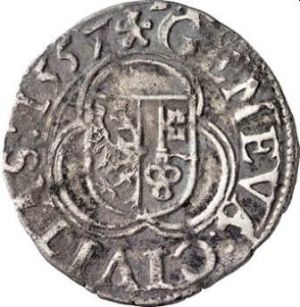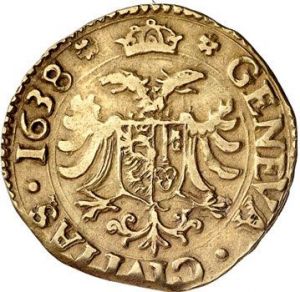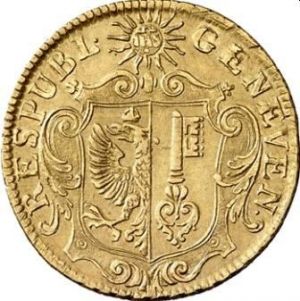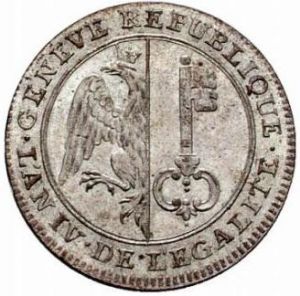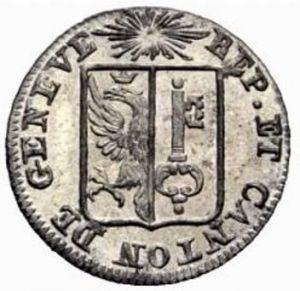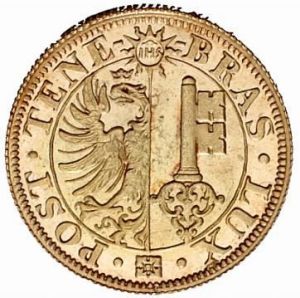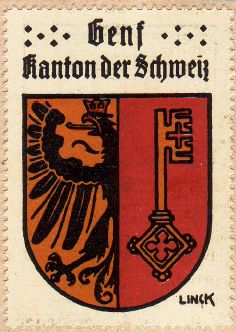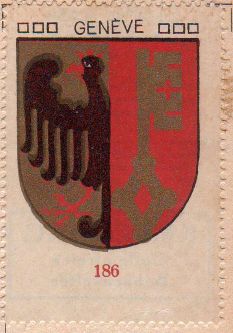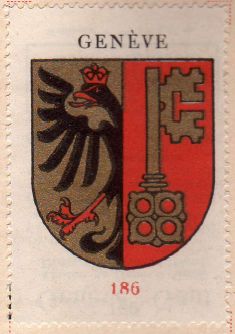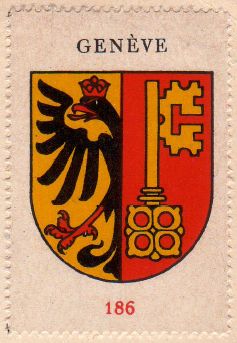Genève
GENÈVE
Canton : Genève
Additions : 1930 Eaux-Vives, Petit-Saconnex, Plainpalais
Official blazon
Origin/meaning
The oldest use of the arms of Genève dates from 1342, when the vicar of the St. Peter Cathedral used arms with two crossed keys (the symbol of St. Peter) and an eagle (the Imperial eagle). It is assumed that the city used arms already a century earlier, but there is no historical evidence thereof.
Whether the arms from 1342 were used by the Cathedral only, or the whole city is not clear, the resemblance, however, is rather great. In the 1440's the arms with eagle and key appear regularly, and are identical to the present arms. The oldest colour image dates from 1451 and shows the present colours.
| The seal from 1483 |
The seal from 1526 |
| The first colour image from 1451 |
The arms in a 16th century manuscript |
| The arms in 1530 |
The arms in the Wapen- en Vlaggenboek van Gerrit Hesman (1708) |
The arms never really changed, except between 1792-1815. In 1792, at the French Revolution, the city joined the Revolutionists and removed the imperial crown from the eagle. Unlike most 'liberated' territories, the arms remained in use. In 1804 Napoleon issued new arms of cities, and Genève received its old arms, with three bees in the upper part as a symbol of a city of the First Order. The imperial crown was again omitted.
| The arms under Napoleon |
In 1814, when Napoleon was defeated, Genève joined Switzerland and restored the old arms. The arms of the Canton of Genève are basically the same as the arms of the city. with the exception of the crest.
City and cantonal coins:
| The arms on a 1574 coin |
The arms on a 1638 coin |
| The arms on a 1722 coin |
The arms on a 1795 coin |
| The arms on a 1833 coin |
The arms on a 1848 coin |
| Souvenir card, 1970s (?) |
Variations of the arms in the Kaffee Hag albums 1914-1960 :
| |
|
| |
|
Literature : Mühlmann, L. : Wappen und Fahnen der Schweiz, Bühler Verlag, Lengnau, 1977 and 1997.

